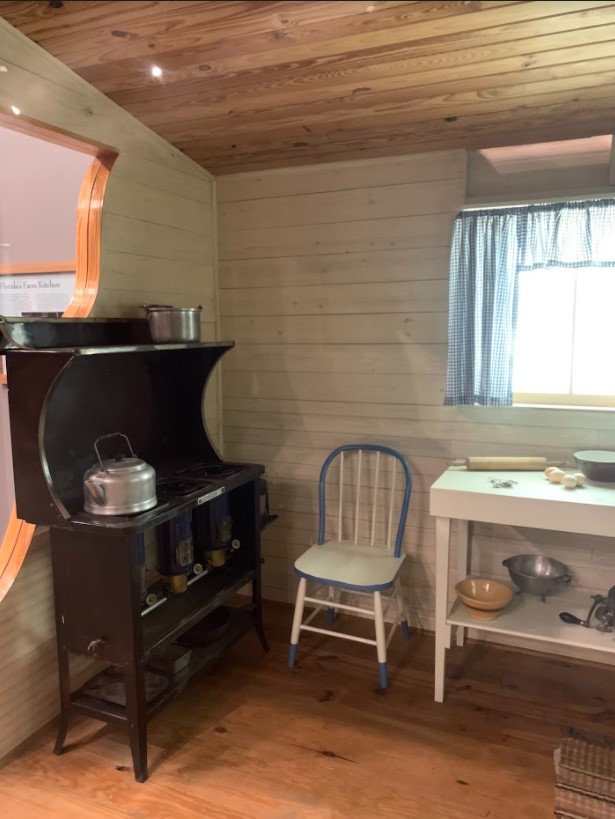Demonstration Agents
By the early twentieth century, about six million farms existed in the United States, home to nearly half of the American population. Local and state programs were formed in Florida and elsewhere to help improve life for farm families. Colleges and universities instructed men and boys on the latest farming techniques. Female teachers offered classes on cooking and food canning to women and girls. In 1914, the United States Congress established the Agricultural Extension Service. This project linked the federal Department of Agriculture with state and local workers to assist farm families. Agricultural extension agents taught men and boys improved methods of farming. Women and girls learned new homemaking skills from home demonstration agents. At first, demonstration focused on white families. In 1917 it was expanded to reach African American women.
 Agents worked with farm women on a variety of home improvement projects, usually meeting with women in organized clubs. Often, the club members addressed the kitchen first. Agents lectured on the latest developments in kitchen design and introduced women to new labor-saving devices. They demonstrated how to arrange furniture to save steps and how to add decorative touches to make the room more pleasant. In addition, home demonstration topics included food canning, nutrition, sanitation, poultry-raising, sewing, dairy work, and budgeting. Agents also taught rug making, basketry, and other crafts. They showed women how to market their handmade products and surplus canned food to fund home improvements.
Agents worked with farm women on a variety of home improvement projects, usually meeting with women in organized clubs. Often, the club members addressed the kitchen first. Agents lectured on the latest developments in kitchen design and introduced women to new labor-saving devices. They demonstrated how to arrange furniture to save steps and how to add decorative touches to make the room more pleasant. In addition, home demonstration topics included food canning, nutrition, sanitation, poultry-raising, sewing, dairy work, and budgeting. Agents also taught rug making, basketry, and other crafts. They showed women how to market their handmade products and surplus canned food to fund home improvements.
 By the 1930s, kitchen design included more storage space, well-placed furnishings, and color. The room pictured here was based on the kitchen of Allegra O’Brien, who lived on a farm in Manatee County. With ideas provided by home demonstration agents she made her kitchen easy to clean, efficient, and cheery. Notice the shelves on the wall and below the counter to provide storage space. Vegetable bins sit beneath the shelves under the counter, and a pull-down ironing board is affixed to the wall on the right to save space. The table is near both the sink and stove for convenience. Mrs. O’Brien installed a roll-up shade to cover the window over the sink instead of curtains that might get splashed.
By the 1930s, kitchen design included more storage space, well-placed furnishings, and color. The room pictured here was based on the kitchen of Allegra O’Brien, who lived on a farm in Manatee County. With ideas provided by home demonstration agents she made her kitchen easy to clean, efficient, and cheery. Notice the shelves on the wall and below the counter to provide storage space. Vegetable bins sit beneath the shelves under the counter, and a pull-down ironing board is affixed to the wall on the right to save space. The table is near both the sink and stove for convenience. Mrs. O’Brien installed a roll-up shade to cover the window over the sink instead of curtains that might get splashed.
Click here for Allegra O’Brien’s description of the improvements she made to her kitchen using the advice of home demonstration agents.
